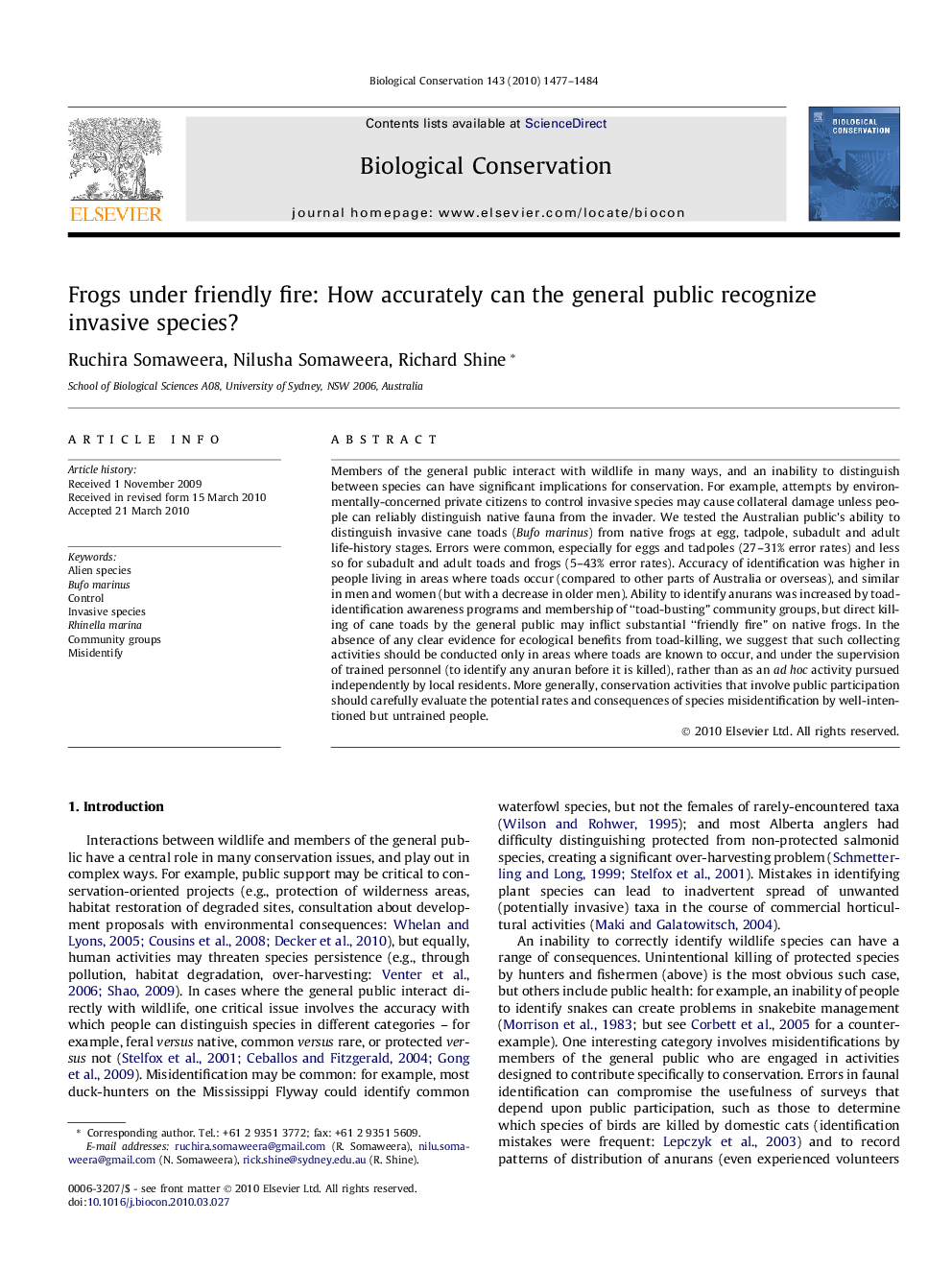| Article ID | Journal | Published Year | Pages | File Type |
|---|---|---|---|---|
| 4385583 | Biological Conservation | 2010 | 8 Pages |
Abstract
Members of the general public interact with wildlife in many ways, and an inability to distinguish between species can have significant implications for conservation. For example, attempts by environmentally-concerned private citizens to control invasive species may cause collateral damage unless people can reliably distinguish native fauna from the invader. We tested the Australian public's ability to distinguish invasive cane toads (Bufo marinus) from native frogs at egg, tadpole, subadult and adult life-history stages. Errors were common, especially for eggs and tadpoles (27-31% error rates) and less so for subadult and adult toads and frogs (5-43% error rates). Accuracy of identification was higher in people living in areas where toads occur (compared to other parts of Australia or overseas), and similar in men and women (but with a decrease in older men). Ability to identify anurans was increased by toad-identification awareness programs and membership of “toad-busting” community groups, but direct killing of cane toads by the general public may inflict substantial “friendly fire” on native frogs. In the absence of any clear evidence for ecological benefits from toad-killing, we suggest that such collecting activities should be conducted only in areas where toads are known to occur, and under the supervision of trained personnel (to identify any anuran before it is killed), rather than as an ad hoc activity pursued independently by local residents. More generally, conservation activities that involve public participation should carefully evaluate the potential rates and consequences of species misidentification by well-intentioned but untrained people.
Related Topics
Life Sciences
Agricultural and Biological Sciences
Ecology, Evolution, Behavior and Systematics
Authors
Ruchira Somaweera, Nilusha Somaweera, Richard Shine,
